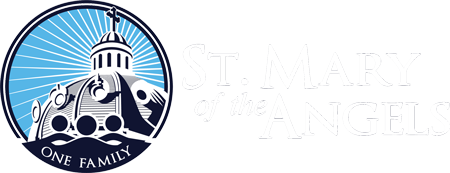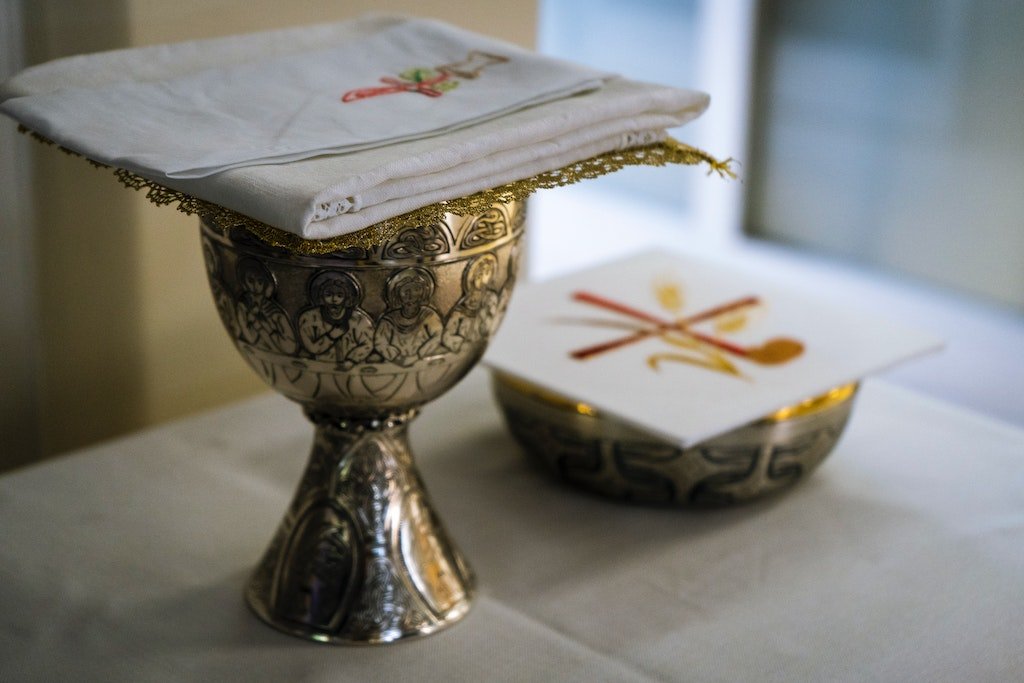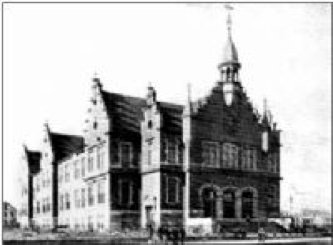Like many other nationalities, Polish immigrants saw America as the “Land of Opportunity” while maintaining their national heritage and their strong faith in God. Before the immigration influx, the Bucktown area of Chicago was mostly open fields used to pasture goats and sheep (the Polish people called male goats “bucks”). Many people fled war-torn Poland in the 1830s to come to the United States. They first settled in area that was Jefferson Township and Holstein (west and east of Western Avenue between North Avenue and Devon). Later Bucktown became the focus of the Polish Community. Germans, Irish, and Lithuanians had also settled here.
In 1864—the year St. Stanislaus Kostka was formed—Annunciation Parish was established to serve the English-speaking Irish Catholics who lived along the Chicago River. In 1874 it moved to the corner of Paulina and Wabansia, just a block south of our St. Mary of the Angels Church and was closed and razed in 1978. The Lithuanians built St. Michael’s Catholic Church on Wabansia, between Paulina and Marshfield, in 1904 to serve the more than 2,000 Lithuanians each Sunday (St. Michael’s was merged with Annunciation in 1970 and torn down).
The pastor of Holy Name Cathedral, Fr. Joseph Roles, went to Rome and approached Fr. Jerome Kajsiewicz CR superior general of the newly founded Congregation of the Resurrectionists, asking him to supply priests for Chicago’s Polish and Bohemian immigrants. Fr. Kajsiewicz visited Chicago in 1871 and he met with Bishop Foley who formally agreed to entrust the Polish missions in Chicago to the Resurrectionists for the next ninety-nine years. The Resurrectionists then took possession of St. Stanislaus Kostka parish.
The real influx of Polish—along with Lithuanian and Italian Catholics—began in earnest in 1890. So, the bishops of Chicago established more Polish churches as immigrants poured into the city: St. Josaphat (1884), St. Hedwig (1888), St. John Cantius (1892), Holy Trinity (1893), St. Stanislaus Bishop-Martyr (a mission church from 1893–1901), and St. Hyacinth (1894).
To meet the needs of the immigrants flooding the Bucktown area of Chicago, the pastor of St. Stanislaus Kostka, Fr. Vincent Barzynski CR petitioned Archbishop Patrick Feehan to make a new parish between St. Stanislaus Kostka and St. Hedwig. So, St. Mary of the Angels parish was formed on November 28, 1898. Fr. Andrzej Spetz CR and Fr. Franciszek (Francis) Gordon CR found a two city block site between Paulina and Wood, and between Bloomingdale and Clybourn Place (renamed Cortland Avenue in 1913). The site was purchased for $60,000 (the agent donated $500 of his $1,500 commission for the new church). One block was subdivided for homes while the other became the site of the parish.
The first pastor and organizer of the new parish, Fr. Francis Gordon at age 39, a great figure in Chicago heading the Polish newspaper, Dziennik Chicagoski, and founding the Polish Alma Mater in 1897, which served more than 10,000 youths.
With great fidelity to the Catholic Faith and dedication to Polish immigrants, Fr. Gordon formed a new parish council first met on February 12, 1899. They broke ground for the church building on April 21, 1899 and Fr. Jan Kasprzycki CR, Superior Resurrectionists in Chicago, blessed the cornerstone on July 2. The three-story brick building was built for $65,000 and designed in the Polish Renaissance style by Henry J. Schlacks—Schlacks became University of Notre Dame’s first Director of the Course of Architecture (School of Architecture).
St. Mary of the Angels was built with love, sacrifice, and nickels and dimes; it was built in love and honor of Our Blessed Mother. These sacrifices were made both by the priests and parish staff, but above all by the faithful parishioners who were moved by love to make these sacrifices for their families and their Mother.



